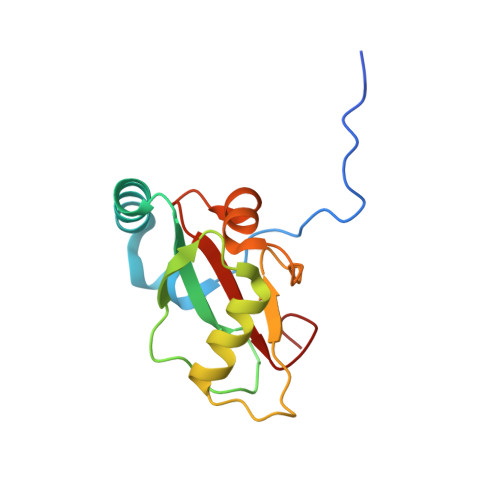Molecular determinants regulating selective binding of autophagy adapters and receptors to ATG8 proteins.
Wirth, M., Zhang, W., Razi, M., Nyoni, L., Joshi, D., O'Reilly, N., Johansen, T., Tooze, S.A., Mouilleron, S.(2019) Nat Commun 10: 2055-2055
- PubMed: 31053714
- DOI: https://doi.org/10.1038/s41467-019-10059-6
- Primary Citation of Related Structures:
6HYL, 6HYM, 6HYN, 6HYO - PubMed Abstract:
Autophagy is an essential recycling and quality control pathway. Mammalian ATG8 proteins drive autophagosome formation and selective removal of protein aggregates and organelles by recruiting autophagy receptors and adaptors that contain a LC3-interacting region (LIR) motif. LIR motifs can be highly selective for ATG8 subfamily proteins (LC3s/GABARAPs), however the molecular determinants regulating these selective interactions remain elusive. Here we show that residues within the core LIR motif and adjacent C-terminal region as well as ATG8 subfamily-specific residues in the LIR docking site are critical for binding of receptors and adaptors to GABARAPs. Moreover, rendering GABARAP more LC3B-like impairs autophagy receptor degradation. Modulating LIR binding specificity of the centriolar satellite protein PCM1, implicated in autophagy and centrosomal function, alters its dynamics in cells. Our data provides new mechanistic insight into how selective binding of LIR motifs to GABARAPs is achieved, and elucidate the overlapping and distinct functions of ATG8 subfamily proteins.
Organizational Affiliation:
Molecular Cell Biology of Autophagy, The Francis Crick Institute, 1 Midland Road, London, NW1 1AT, UK. [email protected].

















